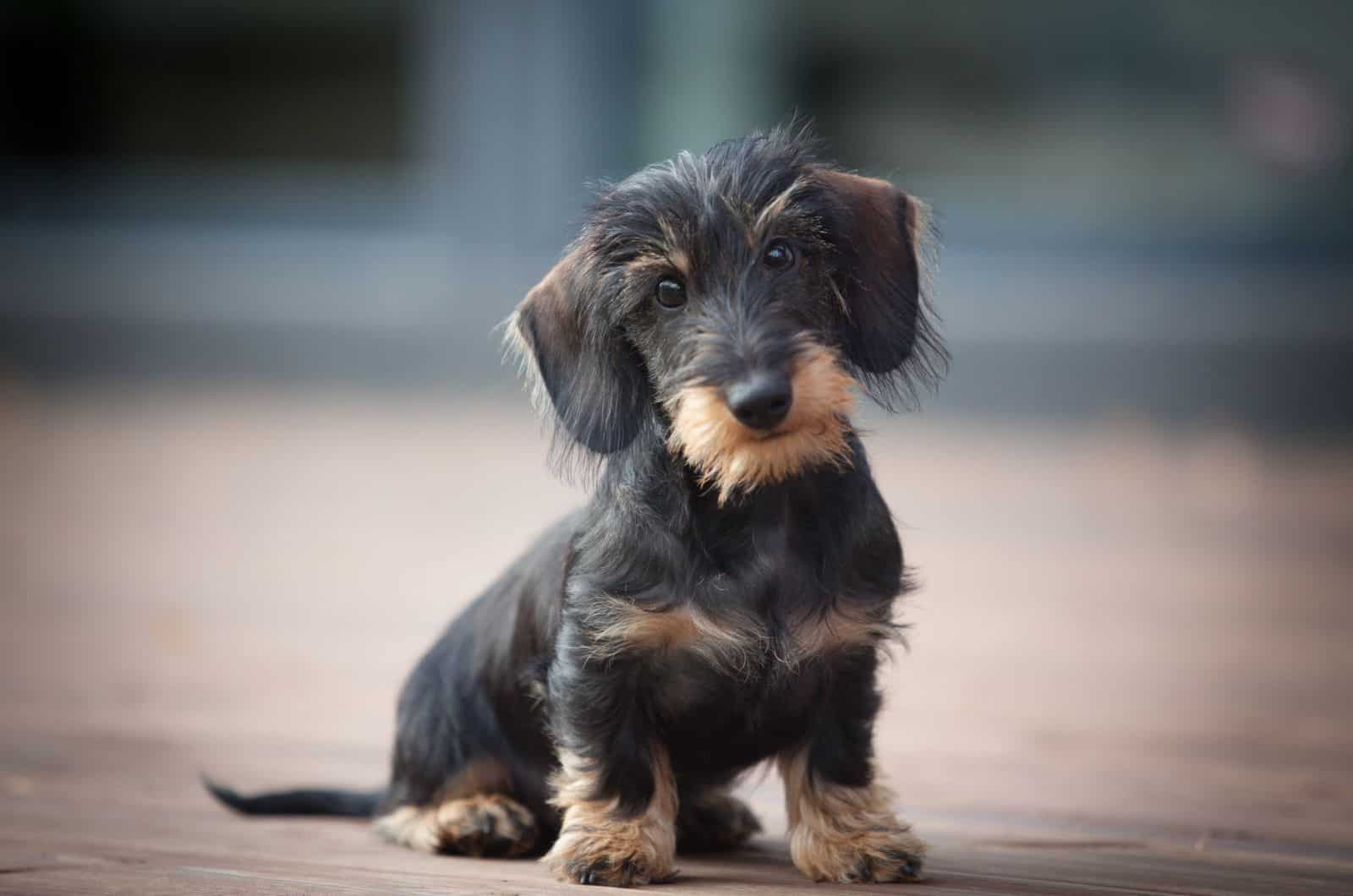Whenever I hear someone mention wire-haired Dachshund, the first image that pops in my head is a sausage dog wearing a Superman cape.
I am not sure why, but they give off that heroic vibe, and there is no shame in getting saved by short legs.
It might be the role… the name: ‘Dachs’ (German, for ‘badger’), and ‘Hund’ (German, for dog) gives a BADGER DOG. Those ratty little badgers.
Okay. Let us check out their Instabark profile.
Wire-Haired Dachshund Profile
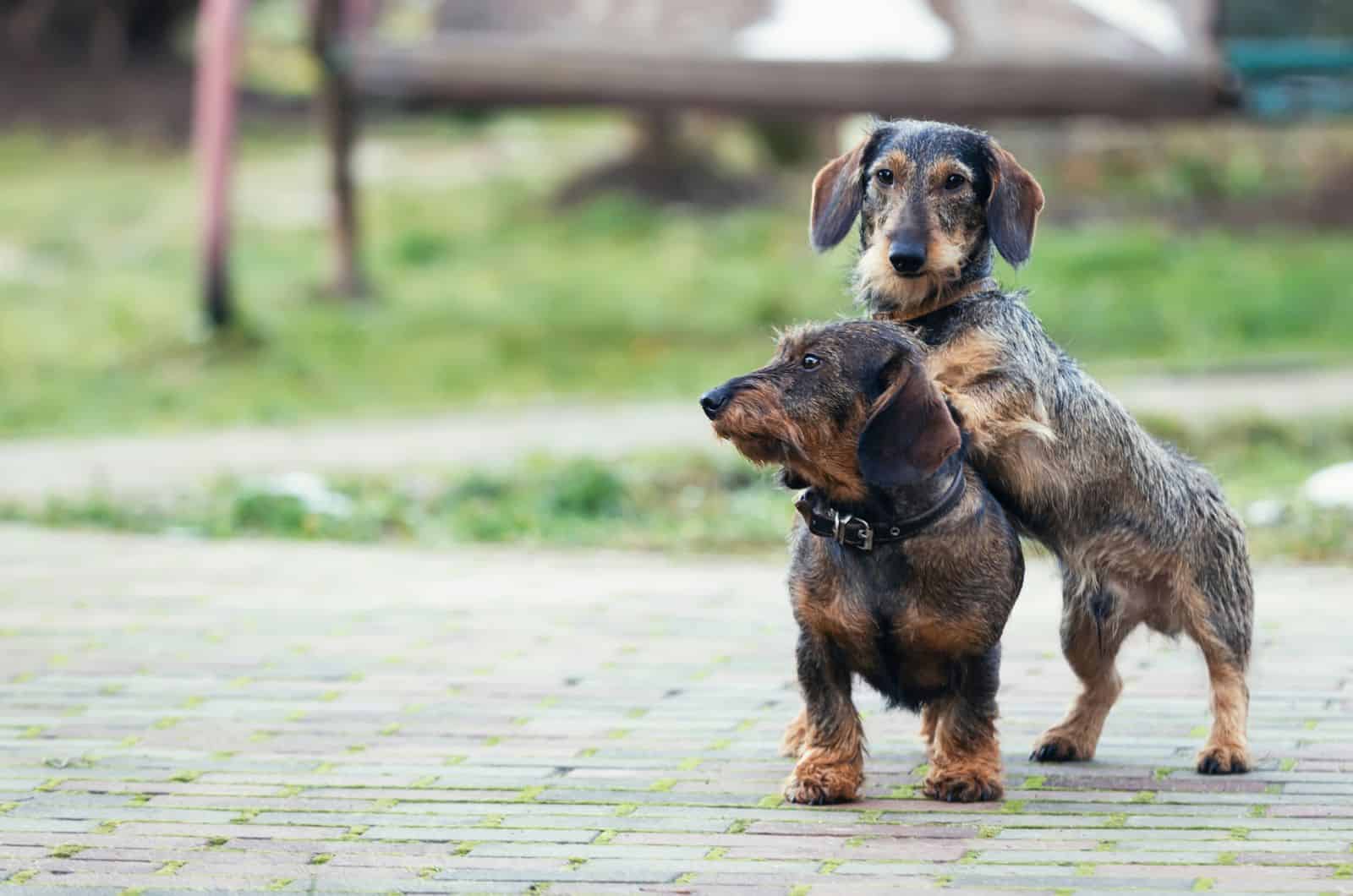
The wire-haired Dachshund ‘About’ section would read something like this:
I am a long-haired wiener dog that loves running around tables. I do enjoy relaxing walks among the trees, and rolling on the grass. The latter is easy because my legs are short.
Because my ancestors gave me the hunter gene (and a convenient name), digging for badgers and chasing them out of holes is always on my mind.
They don’t call me ‘sausage dog’ without good cause. I am a serial eater (pardon the pun), and I love all-you-can-eat buffets. My love handles can suffer because of this.
No need to worry about shedding because my hair is short and stays where it’s supposed to – on me… most of the time.
Barking is another one of my favorites. It really compliments my disobedient poop.
My closest friends call me headstrong, but I strongly disagree. Whenever possible, I take naps to reset my appetite.
What Is Special About Wire-Haired Dachshunds
There are many things to cover here, so grab some water to digest all the information.
While a superhero vibe is completely subjective, their wise-man beard and canopy-thick eyebrows are some of the most distinctive features on the Dachshund’s body.
A wise monk face would not be as impressive had there not been a lengthy body resembling an extra-long limousine.
A scissor bite makes sure no food escapes the bottomless pit that is the Dach’s stomach, and the elongated muzzle adds a dash of elegance to this dwarfish dog breed.
First impressions of a Dachshund will tell you that it is muscular (for a small dog), it looks extremely rugged, and it is resistant to the elements.
The coarse body hair that can look unkempt during shedding periods plays a large part in their toughness and resilience.
We are used to seeing hardy dogs with German heritage, but the Dachshund is a special type of dog. Let us move on to another fun Doxie feature – the diggy diggers.
Wait! I forgot to mention that all this comes in a miniature Dachshund package, too. You are welcome.
Big Growth Except In The Legs
There is no going around the elephant in the room: their short legs. A retrogene called FGF4 has been part of the Dach’s and other dogs’ genetic development.
It (the retrogene) causes the Dach’s bone tip to halt growth at an early age, which is why their legs are not proportional to the rest of their body.
Since selective breeding is the method of choice for creating purpose-driven breeds, these short legs are all about efficiency.
Digging holes in the ground while looking for those pesky badgers is hard labor. Imagine the amount of energy required to quickly move long legs like the great Dane’s.
Thankfully, the Dachshund’s genetic makeup prevents this issue. Their legs are close enough to the ground, and their strong muscles allow for lightning-fast unearthing.
This Big And This Heavy
Every dog and dog breed has variations in average height and weight. The Doxie is no different.
Depending on whether you are looking for a miniature Dachshund or a standard Dachshund, these are the averages:
A mini’s weight should not be under eight or over eleven pounds. The standard Dachshund range is from fifteen to thirty-two pounds.
Five to six inches is a good height for the miniature Dachshund, and eight to nine inches for the standard.
Learn more information from our Dachshund growth chart.
Coat Types To Please Everyone
Firstly, you are in luck in the coat color category because the American Kennel Club recognizes a multitude of colors as the breed standard.
There are the almost-monochromatic variants in black, chocolate, cream, fawn, red, wheaten, and wild boar, and then combos like black and cream, black and tan, chocolate and tan, blue and cream, fawn and tan, fawn and cream, and chocolate and cream.
Funny enough, the most common color is wild boar. We are not offering insults! This is a mixture of brown, black, and gray, and it is usually served on an intermediate coat length.
An undercoat is present, and it even gives the brows and beard a richness that is unique to wire-haired Dachshunds.
Obviously, there is no shortage in the styling department. Interestingly, fawn combinations are also called Isabella due to the presence of a recessive pigment gene.
This color is extremely rare and, if you find yourself desperately wanting it, prepare to pay a premium for it.
Still, rarity comes with a potential health penalty. The recessive gene can cause health issues due to the breeding techniques used in achieving such a coat color.
The wire-haired Dachshund can look very grungy because of the coarse hair quality. This is part of the genetic weather and dirt-proofing.
More Options Of Coat Length And Softness
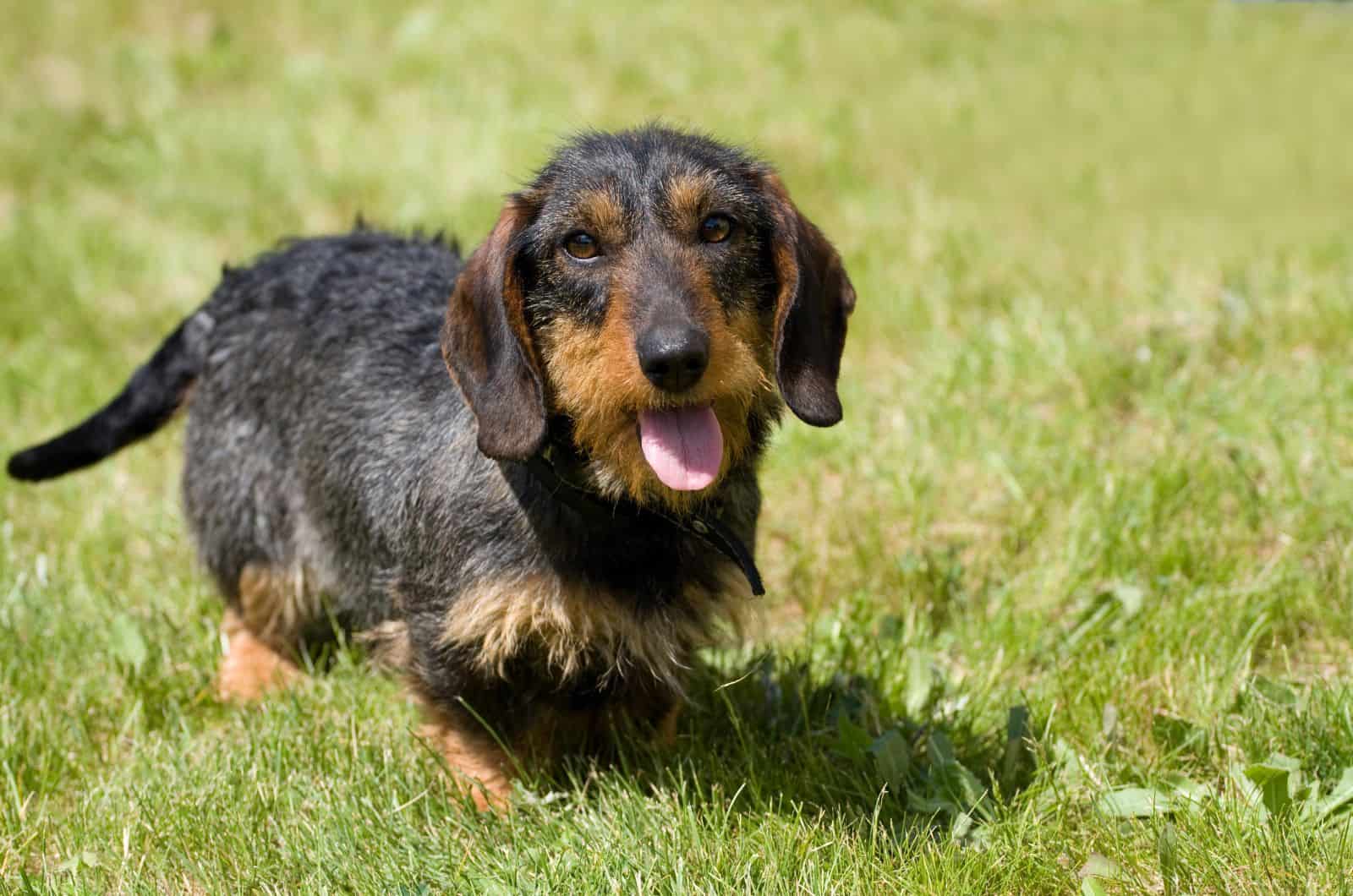
Dachshunds can have a short, wire or long coat. Of course, it mainly depends on the parent combination. Since we have already learned about the wire-haired Dachshund, we can explore some other combinations.
What comes as a bonus trait of combining coats is the quality of the hair. Here are the two possible results:
Soft-wire coat Dachshunds sprout when one parent is long-haired and the other is wire-haired.
The properties of this merger are a slightly less-harsh texture and longer hair. The upside is that you will not have to pet your Doxie with gardening gloves, but shedding activity will, at least, double.
Pin-wire coat Dachshunds are a product of short-hair and wire-hair parents. Such a Doxie has a lowered eyebrow and a bushy beard. A shorter coat means less shedding – appreciation sentence.
They are a smooth-haired version of the wire-haired Dachshund.
Accessorizing With Markings
Are coat colors simply not enough? The Doxie comes with different markings, too. Again, these are accomplished by mixing the recessive gene, and they carry health risks just like the Isabella shade.
Enough with the negativity. Time for some color pattern talk! We will start off with the dapple Dachshund.
This marking can be achieved by mating two dogs that both have the “merle” gene, or one with and the other without.
The pattern is characterized by opaque, base-coat-colored spots on the body. As a reference, a chocolate-colored Doxie will have fainter brown spots on its coat. It is essentially a faded spot mark!
Double dapple simply means more spots! For this combo, both parents need to have the recessive gene.
Next in line is the brindle marking. This is colloquially known as the “brindle” gene. The pattern generated by this recessive gene resembles a tiger’s pattern.
Most often, it takes shape as black stripes over a reddish or brown main body color. Check some other brindle dog breeds!
This marking might have been passed on to the Dachshund by their dreaded enemy – the BADGER! Just kidding.
The piebald pattern manifests itself as unpigmented (white) spots on a pigmented body color. Think cow and you will be close to what it looks like.
The AKC recognizes all three as breed standard markings! Phew.
Their Brain is Wired To Do This
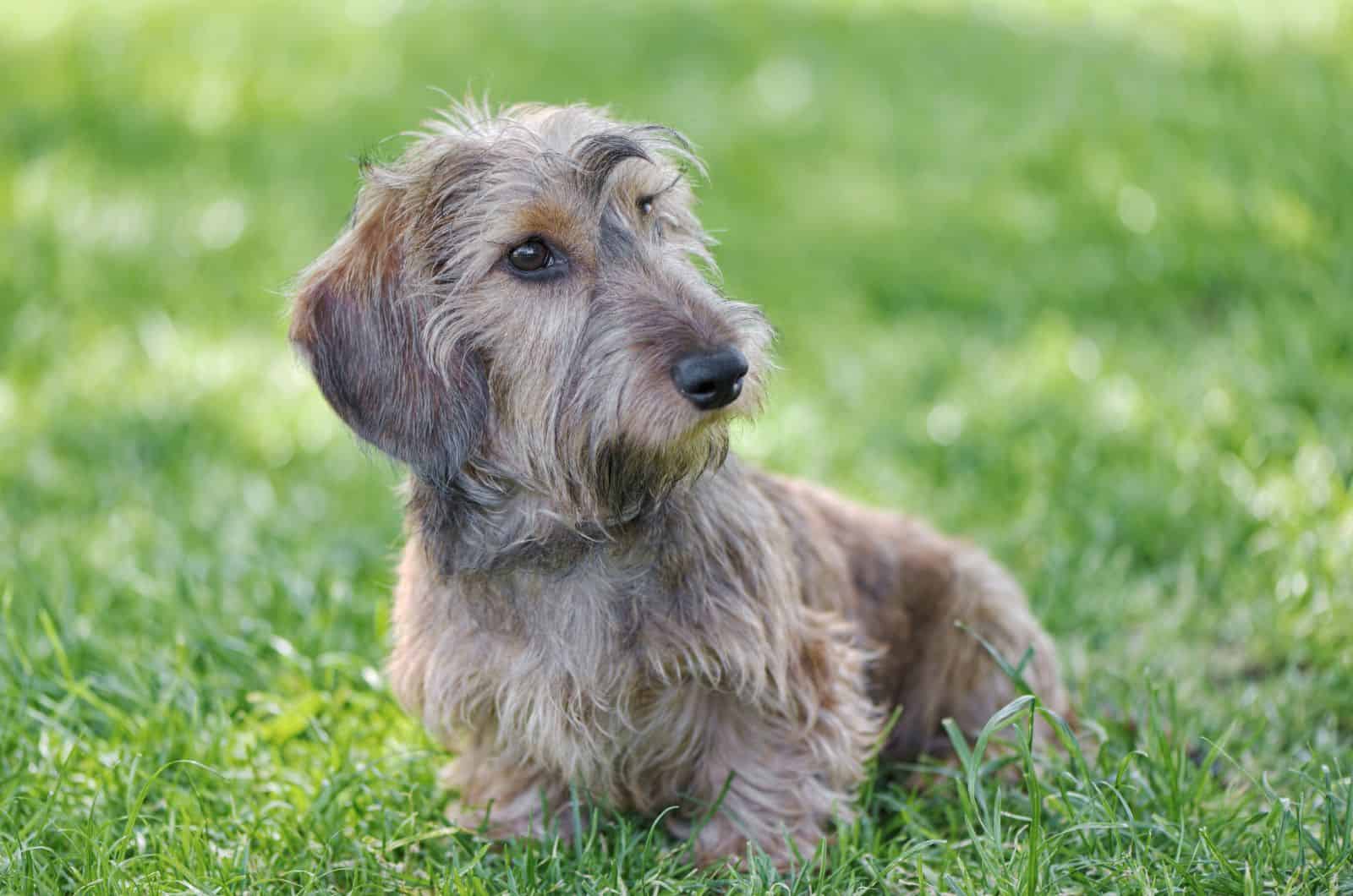
I cannot stress enough how formidable of a watchdog the Dachshund breed is. It might surprise many as to how alert such a silly-looking small dog can be.
They have been man’s companions for hundreds of years. Sniffing, digging, alerting, and chasing are not this prominent in bigger, more menacing-looking dog breeds.
Wire-haired Dachshunds have a tough exterior that is mirrored by their character. Oftentimes, you will butt heads with them for demanding a walk, and sometimes they will demand it while you are resting.
The stubbornness can manifest itself through their barking. Yes, the Doxie barks A LOT. The wire-haired Dachshund is somehow even more vocal.
They are amazing around family members who are respectful of their personal space, but they might not be too forgiving toward small children who like to tug on tails and ears or disturb them while resting.
A Best Friend For Years To Come
Energetic kids who toss around your calm tiny dog? Let the Doxie have a go. It will run circles around them, and enjoy outwitting any human in the vicinity.
What’s a little misconduct when you love your family, and they love you, too?
The wire-haired Dachshund is loyal to the bone. That is, of course, if you treat them with respect and teach them some ground rules.
These, and the characteristics mentioned before, all make for a great friend. Back in the day, Doxies were used as service dogs. This was a big responsibility performed by a small dog.
So, how long do wire-haired Dachshunds live? The life expectancy of this breed is incredible. On average, Doxies will stay by your side for between 12 to 16 years.
This is another testament to their resilience and good health, and it will certainly put your mind at ease.
Before The Wire-Haired Dachshund, There Was…
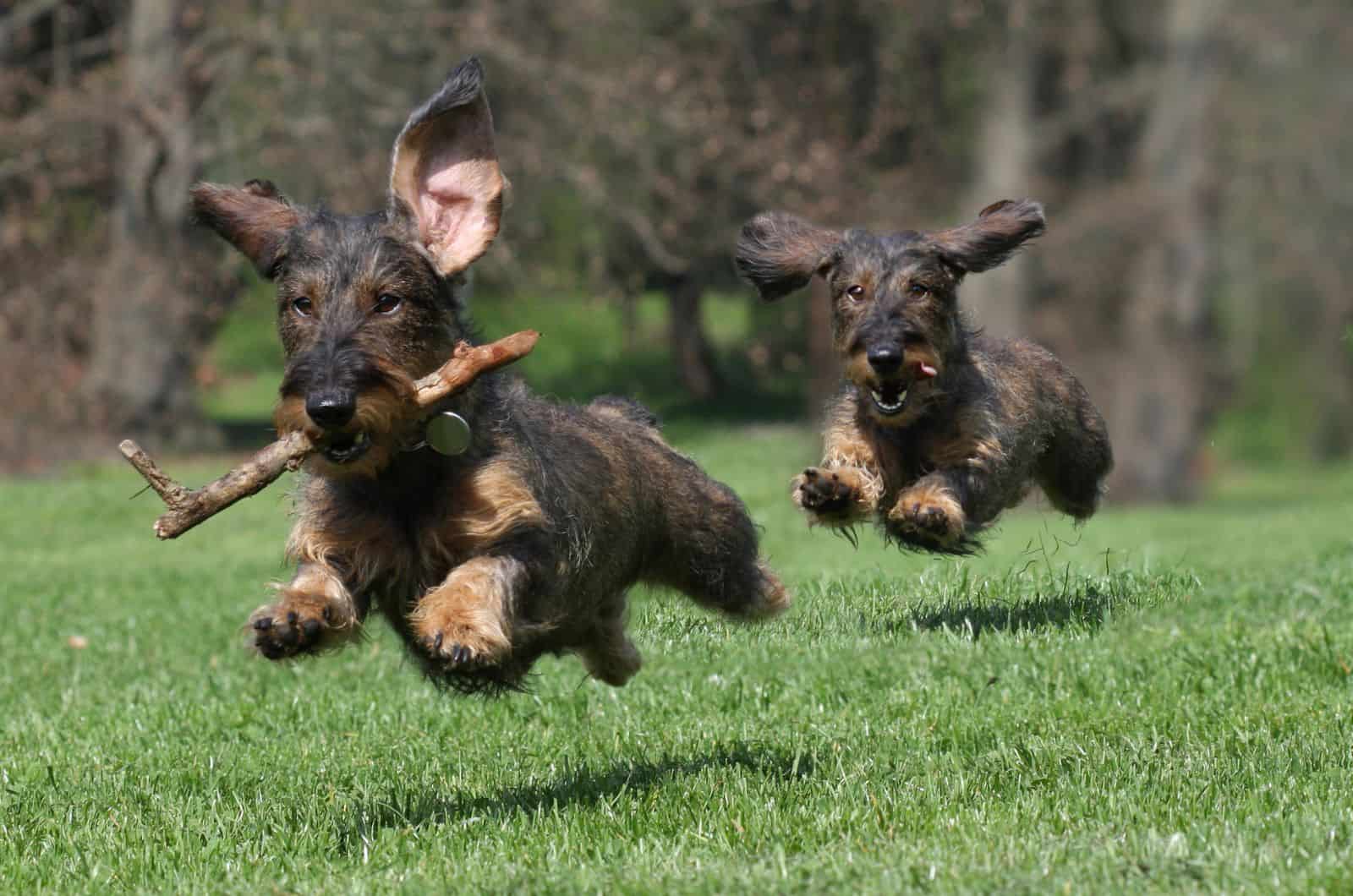
Do you really have enough information about a breed if you are not familiar with its history? What better way to clear your confusion than a good old breed chronicle.
Here is what you need to know about this brave, multi-purpose dog breed.
15th Century Origin
The Dachshund we know today was used for many roles that we nowadays assign mostly to larger and quicker dogs.
However, back in the 15th century, hunting dogs and scent dogs were a necessity. For this reason, the Germans bred the Doxie.
For such jobs, the dog needed to have a strong prey drive. The breeders successfully engineered a dog that was able to hunt badgers by digging, entering their burrows and holes, and chasing them out.
The two size options, miniature Dachshund and standard Dachshund, had different roles. To be more precise, they were both hunting dogs, but their designated prey was different.
The smaller version was used mainly for hunting rabbits. Another type of prey they enjoyed hunting was prairie dogs. They are, however, familiar with larger game, such as deer.
Of course, they did not hunt deer, but tracked them. Still, I am certain they had a blast thinking they were hunting them.
Standard Dachshunds hunt badgers, hares, and similarly-sized burrowing animals.
Wire-Haired Dachshund Development
We already established that the wire-haired Dachshund hails from Germany. An interesting fact is that the three variants of coat in Dachshund dogs appeared in different periods.
It is likely that the “branching out” started in the 19th century, and gained momentum from then on.
Breeding a miniature French Pointer and a Pinscher gave us the smooth short-hair Doxie. This was the pioneer of Dachshunds.
While we know about the first Dachshund being the short-haired one, the wire-haired Dachshund was bred by German hunters and farmers in the 17th century.
Looking for a dog that was capable of dashing through thorny bushes and having an easier time repelling insects, they created the ultimate Dachshund.
The United States had their first taste of the Dachshund dog in the late 1800s, and the AKC officially admitted the breed into their books not long after.
Demand for the breed did not explode until the mid 1900s. It is currently ranked as the 12th most popular breed in the U.S., surpassing many other more imposing dogs.
War Changed The Wire-Haired Dachshund
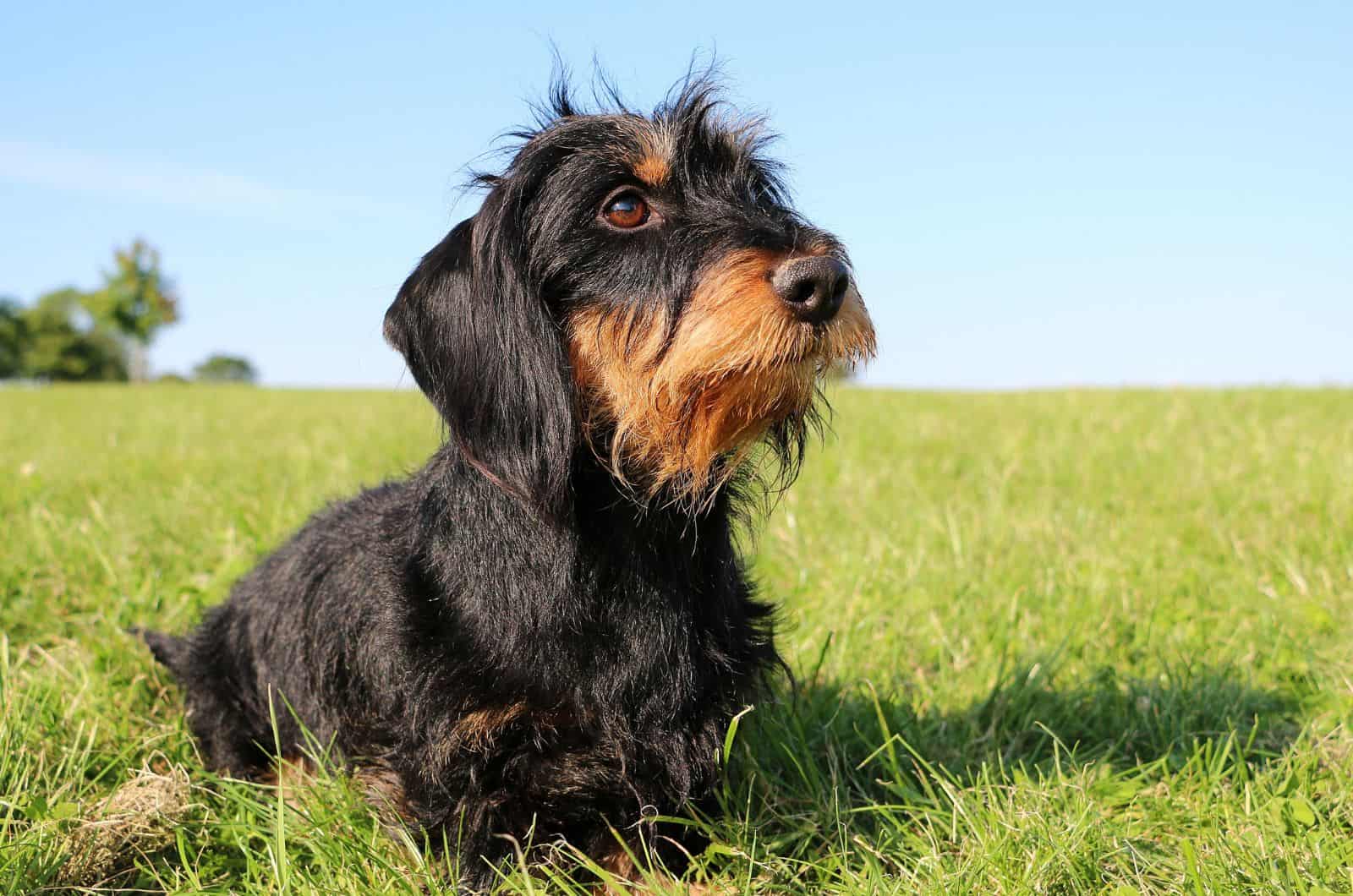
The First World War saw an irrational response of the United States population that is, to this day, seen as brutal.
Being a German breed, it was considered abominable… much like all things German back then. There are stories of alleged stoning of Dachshunds in the streets.
I prefer not to think about that as being true, but we humans are a curious thing, and it would not come as a surprise.
The decline in reputation took a long time to even out to being at the level of people’s favorite that the Doxie has achieved today.
The Second World War saw the breed involved in service duty. They were the sniffer dog of choice for the German army.
Mines, bombs, and other types of explosives replaced the badgers, rabbits, and critters of old. This gloomy environment brought out the worst in people, and another damning role for Doxies emerged.
When food became an attrition instrument for the German army, they employed Dachshunds to sniff it out. At some point, there was no food.
Dachshunds were then rerolled into kamikaze bombs, sent behind enemy lines to cause maximum damage. A starved Doxie looking for food would run across the battlefield and die, taking human lives along.
Modern Times Require Modern Roles
I am extremely thankful that such immense desperation (the 1st and 2nd World War) does not cause harm to dogs.
The last two centuries saw the wire-haired Dachshund become a celebrity dog and a race dog.
I am not bewildered by the celebrity aspect. Many small dog breeds are convenient for famous people, and they help them look better than usual.
The racing dog thing had me wondering why. Visualizing those stubby legs sprinting around the track had me nosing away a laugh.
This more domesticated, or rather adapted-for-humans Doxie role encouraged breeders to “cutiefy” some of the features.
The legs got shorter, the body and ears got longer, and the prey drive was somewhat reduced.
Are You Ready For A Wire-Haired Dachshund?
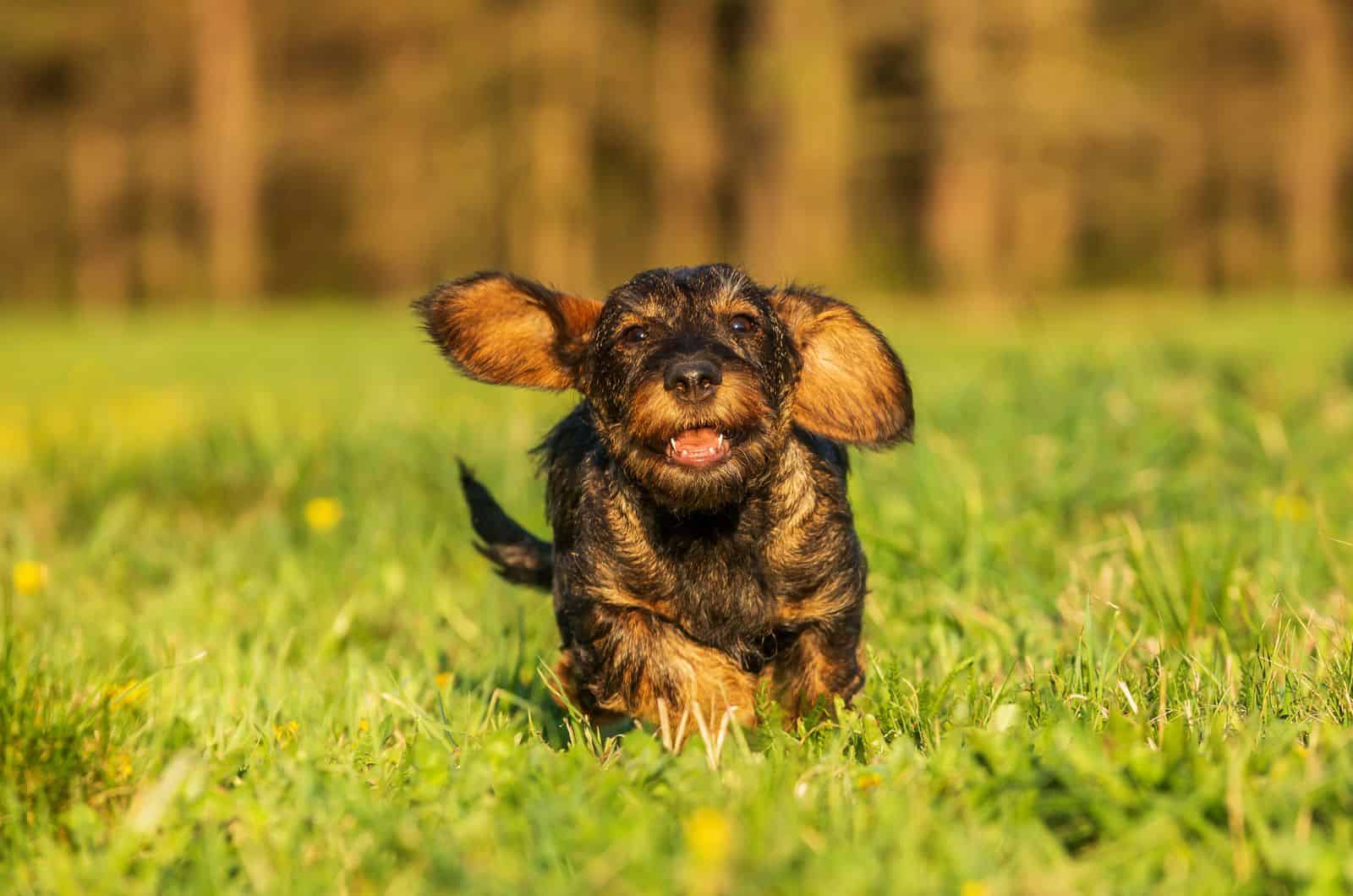
Considering everything you have read so far, do you think you would be able to handle one of these beasts?
As with any feature-specific breeding process, the top of the list is occupied by health concerns.
Here are some things to keep in mind before deciding on getting a wire-haired Dachshund.
The Good
The wire-haired Dachshund is a small dog, which means it can easily adapt to life in an apartment.
Grooming is not a daily chore with most variants, though the long-haired Dachshund will make it tougher on tidiness in the house.
The purebred Dachshund is a relatively healthy dog, and most of the conditions affecting its health are related to small dog breeds. Still, they are susceptible to some breed-particular conditions.
The dog’s activity level is quite balanced, so there should not be too many disagreements between you and your Doxie.
This means that there will be no obstacle to interfere with you and your Dachshund’s training becoming the funnest activity.
Most of the color and marking combinations were given a green light by the AKC and the Dachshund Club of America.
Socialization is no problem for the Doxie. Both strangers and other dogs are welcome to share their home.
Thank goodness their lifespan is 12 to 16 years. We would all love for dogs to live forever.
The Bad
If your workdays are as long as the Doxie’s body, then this might not be a good experience for either of you. Dachshunds need companionship, and separation anxiety is not ruled out.
Depending on the coat length and color, Dachshunds can be quite expensive. The expenses do not end with just paying the breeder – health problems have to be considered in advance.
I am still not sure whether this is a bad thing or not, but they are pretty stubborn. There is a possibility of clashing heads with their owner!
And The Fuzzy
This is among the most important processes that are exclusive to the wire-haired Dachshund.
Are you hungry to find out what it is? Well, remember when I said their grooming needs are not that big? With wire-haired Dachshunds, they actually are a serious business.
Because the coat is coarse and thick, simply brushing would remove a lot of the dog’s protective hair and give it a weird look.
This is why your Wirehund’s hairs have to be hand-stripped. That means you manually remove dead strands of hair. This way, you will not pull out any healthy hair, like you would with brushing.
Scissors are a big ‘no’ if you want your dog to keep the wire-haired look. Cutting it can mess up the natural direction of the hairs, or change the color of it.
This stuff is so serious that there are hand-stripping competitions! In case you want to know more about how it is done and what tools are used, YouTube can help you out.
Alternatively, you can always find a groomer who knows how hand-stripping works, and your wire-haired Dachshund might even snooze through the treatment.
Food, Exercise, And Health Issues
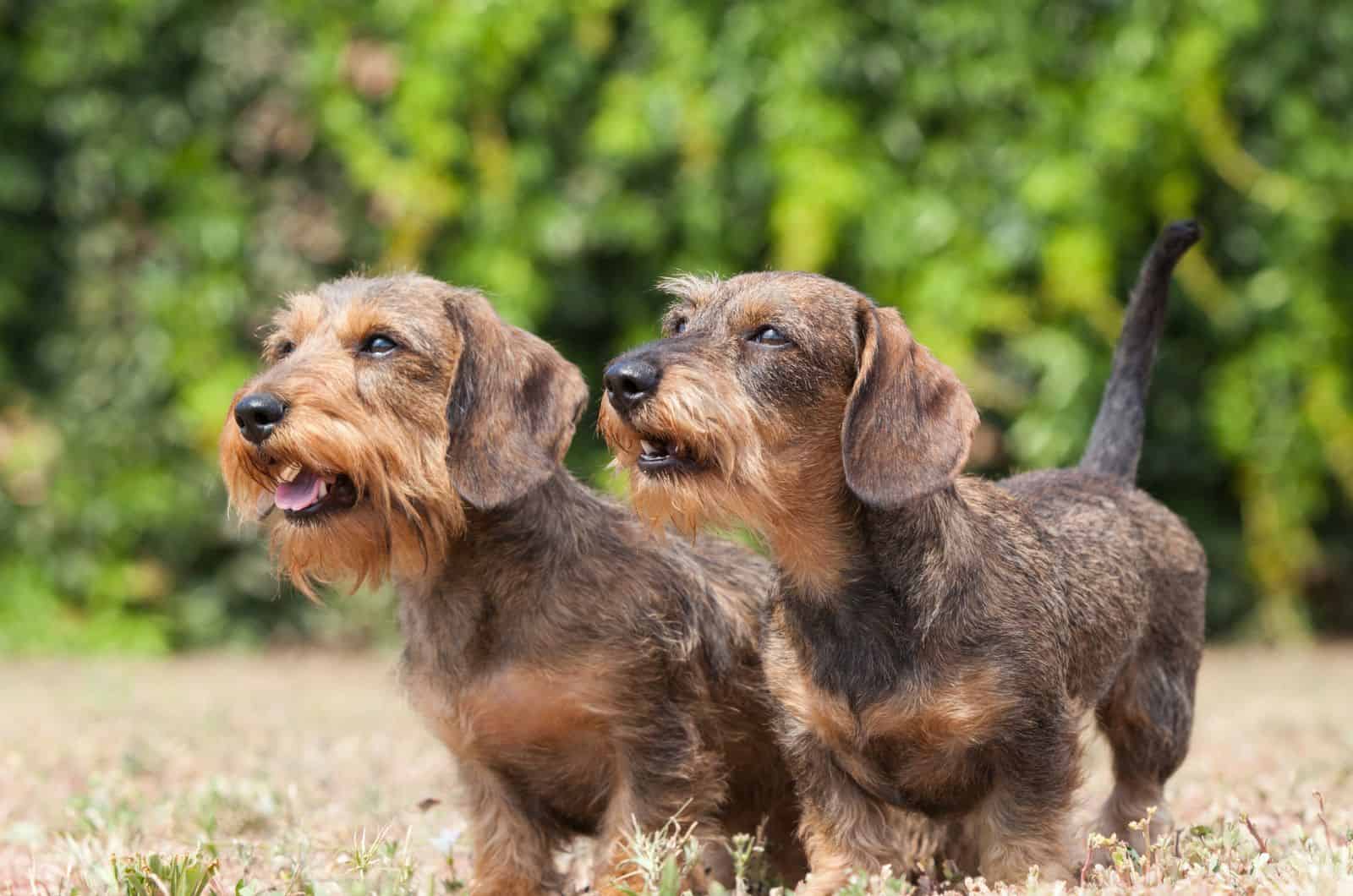
Now, we are approaching the reality check. Living with a wire-haired Dachshund is different than contemplating buying one.
There is a lot to process in terms of good eating habits, physical activity, and health concerns.
First, we need to address this tiny dog’s giant appetite.
Sausage Dog / Infinite Appetite
Their size must not fool you – these are hunting dogs. They are genetically pre-programmed to run after fast animals. This makes for a massive appetite.
You should not have too many problems finding the right dog food for your Doxie. They love food. Dry, wet, fresh… it does not matter.
Implementing a comprehensive and nutrient-rich diet is of great importance. Proper nutrition can extend your wire-haired Dachshund’s life.
An adult Doxie should eat protein-rich food, along with fat and carbohydrates. Vitamins and minerals can be bought as supplements because foods that contain daily doses are quite pricey.
Due to their excellent life expectancy, an old Dachshund will probably be in the double-digit age! This means that you should adapt a diet that contains less protein, but yet other nutrients are not skimped on.
A large appetite also means the potential for obesity. A single pound over the weight limit can change your dog’s state from healthy to unhealthy. Monitor it carefully.
Physical And Mental Gymnastics
Exercise is a must with wire-haired Dachshunds. Breeds that hunt and have a strong prey drive usually thrive in active environments.
Your version of active does not have to be the same as someone else’s, but daily walks and dedicated thirty-minute spells of intense activity will take care of any leftover energy.
Blending obedience training with these activities can increase the fun factor for both dog and owner.
Due to their body shape, hiking, climbing, and jumping should be avoided in order to lower the chance of joint wear and tear or other injury.
You can finally practice your low frisbee throw because they are suckers for fetch.
For the brain, we recommend incorporating their sniffing affinity into puzzle games for dogs. Your imagination is the limit here.
Health Is Wealth, And Doxies Are Rich
Having been bred for centuries, but being a relatively new lineage of dog, the wire-haired Dachshund is among the healthier dog breeds.
Avoiding health problems is hard for any being on the planet, but Doxies fare surprisingly well on this front.
Here is a SHORT list of conditions that affect the breed.
Intervertebral Disc Disease (IVDD)
This is nothing but a hernia. I have had them, and probably, you, too. While it can vary in severity, most mild cases can be treated with NSAIDs (non-steroid anti-inflammatory drugs).
The main goal is to reduce swelling and pain so that the spine can return to its natural shape. The vet will probably order very reduced activity for several weeks or until the IVDD subsides.
In both cases, the vet will sometimes advise physical therapy to restore muscle strength.
Obese wire-haired Dachshunds are more likely to suffer from back problems, which is why moderate exercise and a good diet is crucial in prevention.
Symptoms, depending on the affected part of the spine, can be bad posture, whimpering while moving, restricted range of motion, etc.
Cushing’s Disease (Hyperadrenocorticism)
The adrenal glands produce cortisol, and this hormone influences many vital systems in your Dachshund’s body.
Some of the most important are blood pressure regulation, glucose increase, reducing inflammation, absorption of nutrients, and raising energy levels to cope with anxiety.
Cushing’s fools the brain receptors that monitor the level of cortisol; thus, forcing them to unnecessarily produce more.
Constant stress or obesity are common causes of Cushing’s disease in Dachshunds.
Symptoms can include reduced activity, skin infection, a bigger appetite, incessant panting, increased water intake, and more.
Progressive Retinal Atrophy (PRA)
This is a condition caused by more than one disease targeting the eye’s photoreceptors. The cells that are the building blocks of all eye functions start to degrade and eventually die.
Dachshunds inherit this condition, which means that the breeder who sold you the puppy is not to be trusted. These Dachshunds should not take part in breeding due to obvious reasons.
Since it progresses over time and, inevitably, causes complete blindness, a lot of Doxies slowly get used to it and lead somewhat of a normal life.
Symptoms are generally easy to spot. Your dog will start to stumble on things, wet its nose while drinking water, and other depth perception difficulties, along with loss of peripheral vision.
Caring For A Wire-Haired Dachshund Puppy
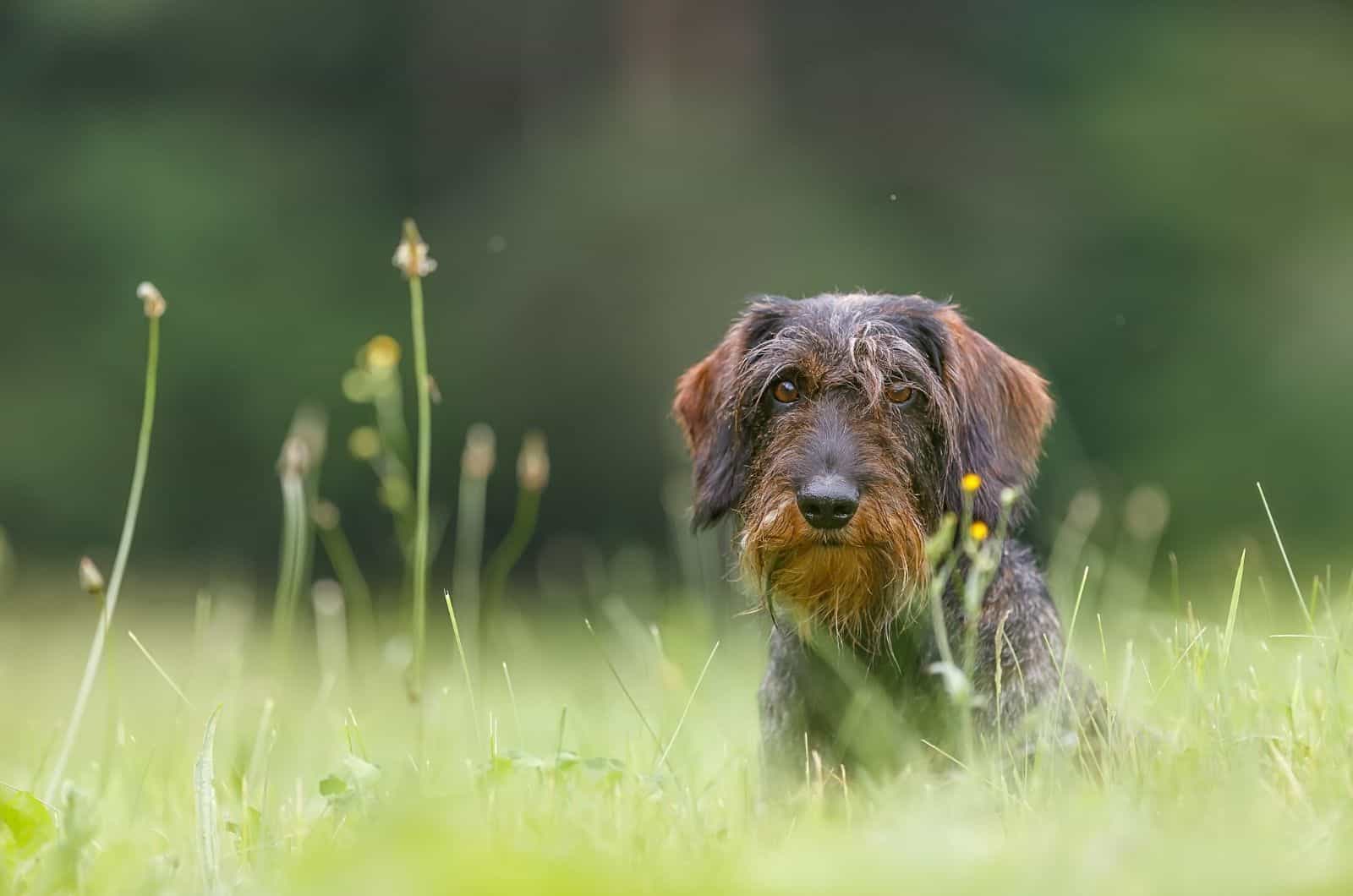
As I always say: raising a puppy is different than with an adult dog. Puppies are quick studies, but the process can be daunting, especially for new owners.
I assorted some tips to make life easier for you while you navigate through your wire-haired puppyhood.
Eating Is Fun
Even adult wire-haired Dachshunds are food driven. Imagine how hungry and food-obsessed a puppy Doxie is.
Okay, great! Now, multiply that by five. That should give a rough estimate on the attention you will have to pay to a proper puppy eating regime.
Like many other small dog breeds, the Dachshund has a small mouth. This means that you will have to buy puppy kibble or some other specialized small dog food.
Wet food can be problematic with wire-haired Dachshund puppies because their stomach cannot handle the amount of fluids contained in wet foods. Runny stool alert!
Doxie pups should eat three times a day, with moderate activity in-between meals.
Housebreaking Business
Wire-haired Dachshunds are notorious for one specific act of disobedience. In fact, this might be considered as organized crime.
You MUST go through intense potty training with your Doxie. Teaching a puppy where to poop and pee is hard enough, but when it grows up and starts hate-pooping in places where it should not…
Do not put yourself through this ordeal. Be rigorous and stern with potty training. Hold your ground even if (all pooped up) it starts menacingly walking towards you.
A rebellious poop or two in its teenage years is fine, but riot pooping at five or more years of age is just criminal behavior!
Wire-Haired Dachshund Breeders
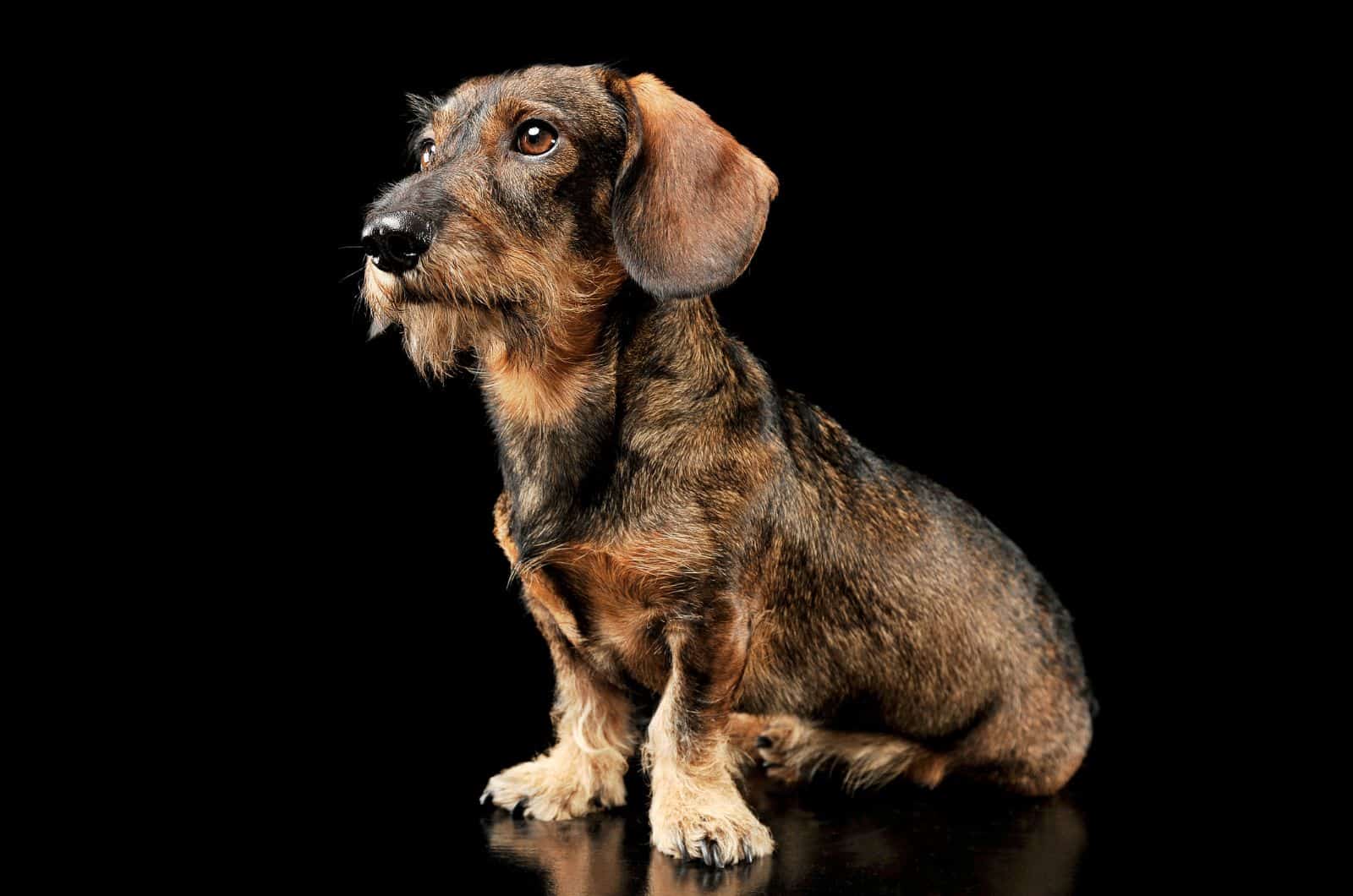
A good wire-haired Dachshund breeder will probably be hard to find in the U.S. as wire-haired Doxies are more popular in Europe. Still, it is not impossible to get one in the U.S.
Make sure that the place you choose practices ethical breeding, and that the dogs do not have congenital or inherited diseases.
You can ask dog clubs or your vet of choice for breeder recommendations.
How To Tell If A Puppy Will Be Wire-Haired
The first thing you should do is see the parents. If one or both parents are looking like they could use a shave, then their puppy is definitely going to be a wireling!
The breeder should always know this in advance, and be ready to provide pictures of the puppy’s parents. You can also ask to see that pair’s previous litter photos.
Note that you can take a look at the puppy itself (if it is old enough to develop the required features) and check for thick brows, an “old man” beard, and coarse hair around its paws.
The Price Is Nice
Rarity carries a hefty tag. If you are looking for a wire-haired Dachshund, it will cost you from $500 to $3,700.
I know it is a steep price, but the amount of dog you get is… I cannot even finish the joke.
Anyways, they are relatively cheap compared to other small dog breeds.
Going for a rare coat color or markings? This Doxie will add between a few hundred dollars and a little over one thousand to the original price.
Closing The Circuit
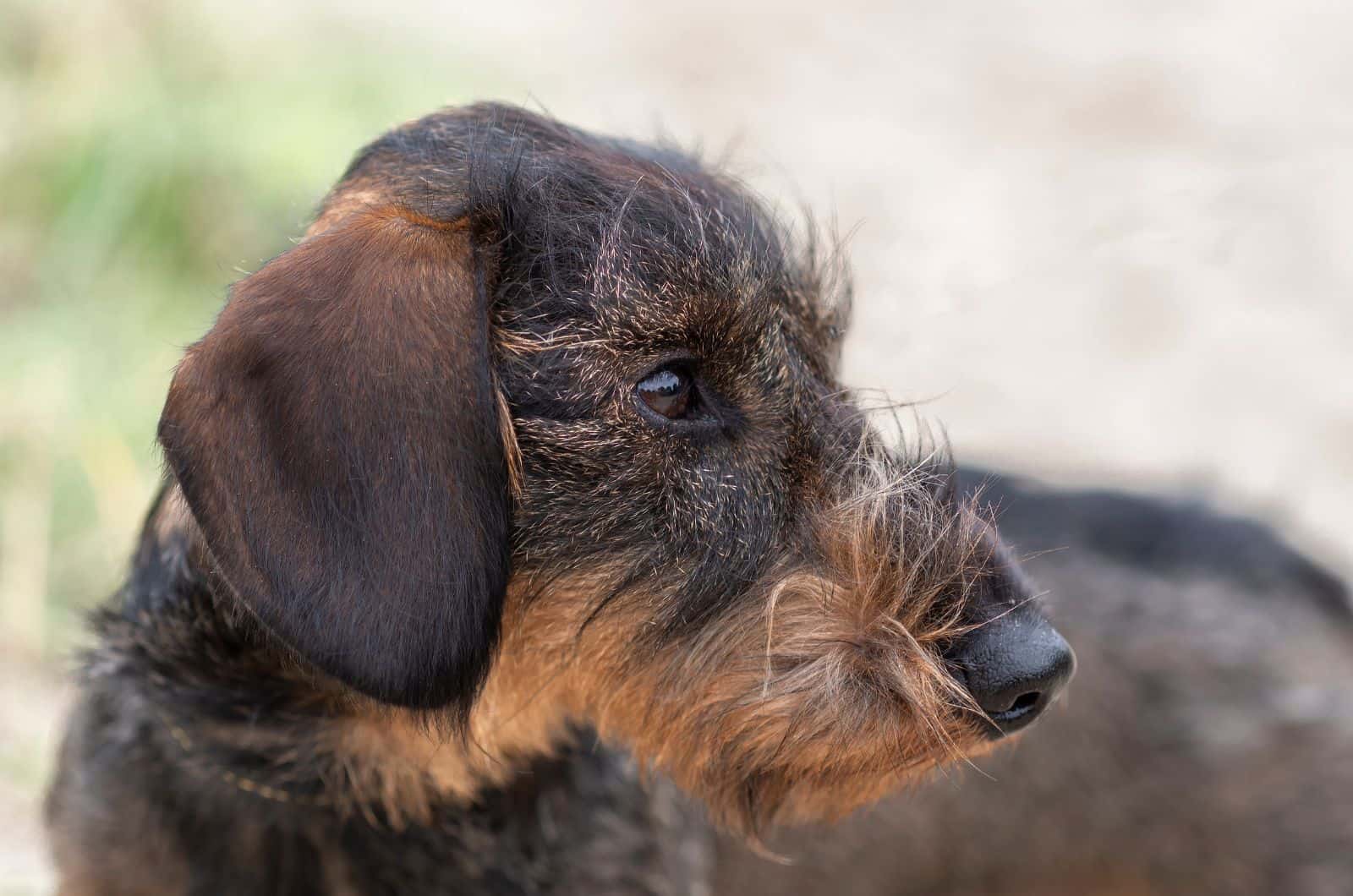
If you are on the wire regarding the decision to get a wire-haired Dachshund, I advise you to just go with it.
Getting to the end of this article means you liked what you learned, and you have upgraded yourself to “I’m probably getting one”.
In all honesty, the price is manageable. Getting a wire-haired Dachshund from a reputable breeder means it will be healthy and live up to a decade and a half.
They are smart, easily trainable, sometimes stubborn (this gives them more appeal, in my opinion), and quite balanced overall. Well, except for the leg-to-body proportion.
